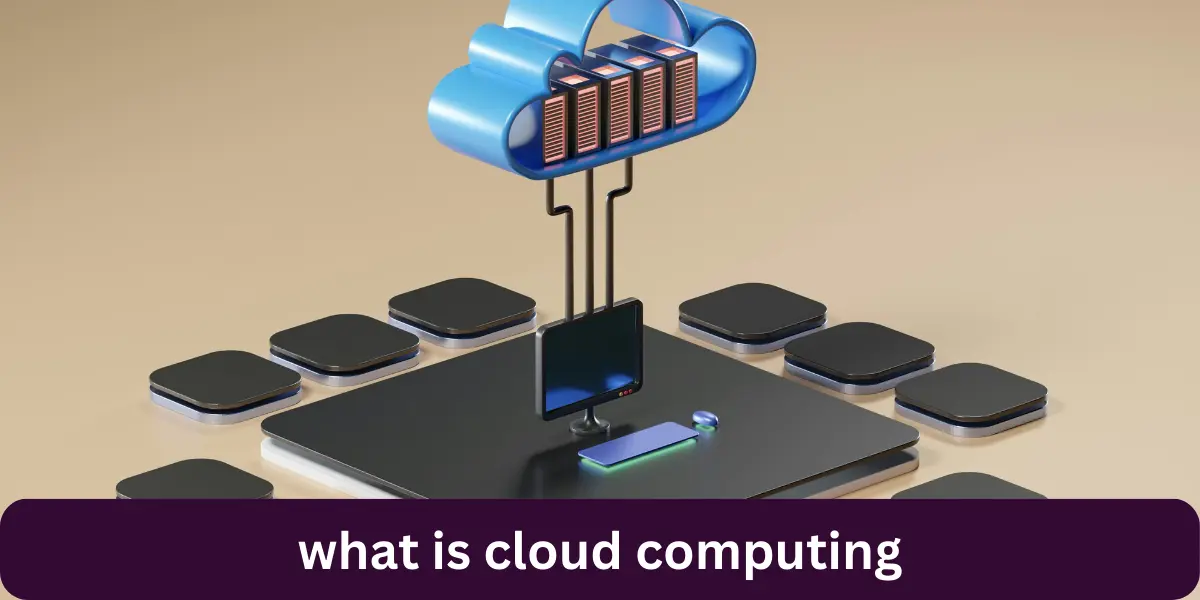Cloud Computing Explained: Benefits, Types, and How It Works
Published: 12 Dec 2024
Learn what cloud computing is and how it transforms data storage, access, and business operations. A simple guide for beginners and tech enthusiasts.
Cloud computing offers on-demand resources, scalability, and cost efficiency. Explore its types, benefits, and why it’s revolutionizing technology . Cloud Computing Explained

What is Cloud Computing?
Cloud computing is more than just a buzzword—it’s a technology that powers much of the modern world. From storing photos in Google Drive to streaming your favorite shows on Netflix, cloud computing is everywhere. But what exactly is it, and why is it so essential? Let’s break it down in this user-friendly guide designed to help beginners understand cloud computing and its incredible benefits
.what is information technology
.What is IoT (Internet of Things)
Understanding Cloud Computing
At its core, cloud computing is the delivery of on-demand computing resources—like storage, servers, and applications—over the internet. Instead of relying on your computer’s hard drive or a local server, you can access what you need from a remote data center managed by a cloud service provider.
Think of the cloud as a massive network of servers that you can connect to, anytime and anywhere, as long as you have an internet connection.
Key Characteristics of Cloud Computing
Resource Pooling
Cloud providers use a multi-tenant model, meaning computing resources like storage, servers, and networks are shared among multiple users. This ensures optimal use of infrastructure while maintaining user privacy.
Elasticity
Cloud computing dynamically adjusts resources to match demand. Whether your needs increase suddenly or drop off, the cloud scales automatically, ensuring efficiency and cost-effectiveness.
Measured Service
Global Reach
With data centers worldwide, cloud computing ensures minimal latency and high availability. It enables businesses to expand their operations globally without setting up local infrastructure.
Resilience and Redundancy
Self-Service
Users can access cloud services and manage resources through intuitive dashboards or APIs, reducing dependency on IT staff for basic operations.
Security
Automation
Tasks like resource allocation, scaling, and updates are automated in the cloud, reducing manual intervention and ensuring smoother operations.
How Does Cloud Computing Work?
Remote Servers: Companies like Amazon Web Services (AWS) and Google Cloud host enormous data centers. These servers store and process your data.
Access via Internet: Users connect to these servers through the internet, whether for personal use (e.g., Google Photos) or professional services (e.g., Salesforce).
Pay-as-You-Go Model: Most cloud services charge only for what you use, making it cost-effective for individuals and businesses.
Types of Cloud Computing Services
Cloud computing isn’t a one-size-fits-all solution. Here are its three main service models:
Infrastructure as a Service (IaaS)
Provides virtualized computing resources like servers, storage, and networks.
Example: Amazon Web Services (AWS).
Use Case: Startups using virtual servers instead of buying physical ones.
Platform as a Service (PaaS)
Offers platforms for developers to build, test, and deploy applications.
Example: Microsoft Azure.
Use Case: Software developers creating custom applications.
Software as a Service (SaaS)

- Delivers software applications over the internet.
- Example: Google Workspace (Docs, Sheets, Drive).
- Use Case: Teams collaborating on documents in real time.
- Types of Cloud Deployment Models
- The way cloud computing is deployed also varies based on the needs of the user:
types of Cloud Deployment Models
There are different ways the cloud can be deployed, depending on needs:
Public Cloud
Description: Services are shared across multiple users via the public internet.
Example: Google Cloud, AWS.
Benefit: Cost-effective for startups and individuals.
Private Cloud
Description: A dedicated cloud environment for a single organization.
Example: VMware Private Cloud.
Benefit: Enhanced security and control.
Hybrid Cloud
- Description: Combines public and private clouds, allowing data to move between them.
- Example: A business using private storage for sensitive data and public cloud for customer-facing apps.
- Benefit: Flexibility and scalability.
- Benefits of Cloud Computing
- Cloud computing is popular for good reason. Here’s what makes it a game-changer:
- .https://cloud.google.com/
Cost Savings:
Avoid the expense of buying and maintaining physical hardware.
Scalability: Easily adjust resources based on demand.
Accessibility: Work from anywhere, using any device.
Data Security: Leading providers implement top-notch security protocols.
Disaster Recovery: Backup systems ensure data retrieval even after hardware failures.
Practical Applications of Cloud Computing
Cloud computing isn’t just for tech giants; it’s everywhere:
- Personal Use: Storing photos, videos, and documents on platforms like iCloud or Google Drive.
- Business Applications: Companies use tools like Salesforce for customer management.
- E-Commerce: Websites like Amazon run on cloud infrastructure to handle large amounts of traffic.
- AI and Analytics: Cloud platforms power AI models and large-scale data analysis.
- Education: Online learning platforms like Coursera rely on the cloud to deliver content to millions.
Practical Applications of Cloud Computing
Cloud computing isn’t just for tech giants; it’s everywhere:
Personal Use: Storing photos, videos, and documents on platforms like iCloud or Google Drive.
Business Applications: Companies use tools like Salesforce for customer management.
E-Commerce: Websites like Amazon run on cloud infrastructure to handle large amounts of traffic.
AI and Analytics: Cloud platforms power AI models and large-scale data analysis.
Education: Online learning platforms like Coursera rely on the cloud to deliver content to millions.
Challenges of Cloud Computing
While cloud computing has numerous advantages, it also comes with challenges:
Data Privacy: Trusting third parties to secure sensitive information can be risky.
Downtime: Service disruptions can impact accessibility.
Compliance Issues: Different countries have varying laws on data storage and privacy.
Which of the following is an example of cloud computing?
Cloud Computing Explained
| Quiz: Test Your Cloud Computing Knowledge! |
|---|
|
A) Installing software on a local computer What does SaaS stand for? A) Secure and Accessible Storage Which cloud model is ideal for startups looking for cost-efficiency? A) Public Cloud True or False: Cloud computing is only for large companies. (Correct Answer: False) A) Accessibility |
FAQs About Cloud Computing
- What are the best free cloud services for beginners?
Google Drive, Dropbox, and OneDrive are great options for beginners looking to explore cloud storage.
Yes, leading providers use encryption and advanced security protocols, but users should take extra precautions like enabling two-factor authentication.
Some services, like Google Drive, offer offline modes, but most require an internet connection for full functionality.
Proudly powered by WordPress






